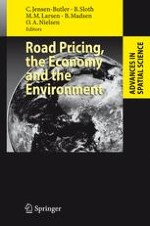Economic growth and globalisation create traffic growth, leading to congestion, which again increases travel times and costs. Traffic growth also increases CO2 emissions, air pollution, accidents, and noise. So, clearly there is a need to manage traffic, taking into account that there is a need for transportation; hence it cannot be restricted without costs.
Road pricing, where motorists pay for driving on specific roads, is an instrument that may efficiently reduce the negative impacts. But despite technological development and the efforts of the EU, it is still not widely used. Apparently, more research-based knowledge about the positive and negative consequences of road pricing is required.
This volume is a collection of research papers on the use of road pricing. The focus is on passenger transport, and the papers cover a wide range of approaches, including theoretical modelling and empirical studies of road pricing experience from different cities.
